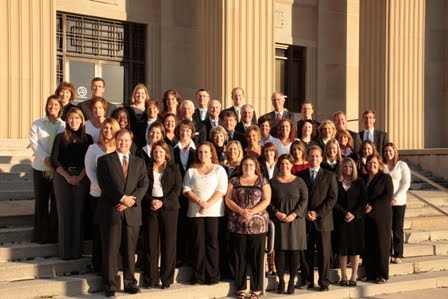 |
| E. Wyles Johnson |
When it comes to long-term care, most people much prefer to receive services in the comfortable surroundings of their own home, where practical, rather than in an institutional setting. Those preferring to receive at-home care may want to consider North Carolina’s Long-term Care Partnership program. This legislation, which became effective January 1, 2011, is a public/private approach to encourage North Carolinians to plan for and manage the costs of long-term care by investing in private long-term care insurance as a means of protecting some or all of their assets. The Partnership targets North Carolina’s aging baby boomer generation, the largest segment of our population. It provides North Carolinians a means to exclude some or all of their “countable” assets from Medicaid spend down requirements, while protecting the same amount from estate recovery. It also requires that the policy automatically include an annual cost-of-living benefit as protection against inflation.
The Partnership’s overall objective is to reduce North Carolina’s Medicaid expenses associated with the escalating cost of long-term care. Here is how it works: A person purchases a commercial long-term care insurance policy which is “Partnership-qualified.” In the event that the policyholder cannot perform two or more of the six “Activities of Daily Living” (or ADLs; i.e., transferring into or out of bed or chair, toileting, bathing, dressing, eating and maintaining continence) without assistance, the typical policy pays for services such as in-home care, community-based services, assisted living care, or skilled nursing home care. The Partnership allows the policyholder to protect one dollar of Medicaid-determined “countable assets” for every dollar the policy pays out in benefits. When the policy's lifetime benefits are exhausted and the policyholder applies for Medicaid long-term care benefits, Medicaid when determining qualification will disregard a dollar amount of countable assets equal to the total amount of benefits paid out under the policy. Such assets are above and beyond the basic allowance for countable assets which an applicant and his spouse are allowed to keep under the Medicaid program. In addition, Medicaid could not recover the disregarded amount from the recipient’s estate at his death.
For example, assume you are married and purchase a Partnership-qualified policy providing a monthly benefit of $5,000 over a period of five years for a total of $300,000 in initial lifetime benefits, with a five-percent compounded inflation rider. Ten years later, you suffer a stroke or accident, resulting in you requiring assistance with the ADLs of transferring, bathing, and dressing. Because of the inflation rider, your policy’s monthly benefit has grown to $8,144, thus increasing the lifetime benefit over five years to $488,668. You hire caretakers to provide in-home care to assist with these ADLs. You file a claim under the policy and receive payments of $8,144 per month over a period of five years for a total payout of $488,668, thereby exhausting the policy limits. You still need long-term care and apply for Medicaid benefits. In considering your application, Medicaid determines that you and your spouse combined own a total of $500,000 in countable assets, including savings and retirement accounts, a family-owned business, and a beach cottage which is not your primary residence. Medicaid would allow your spouse to keep the basic spousal allowance of $113,640 of such assets (in 2012), with the balance of $386,360 being allocated to you. Ordinarily you must “spend down” those funds to $2,000 before you would be eligible for benefits, which may include paying an average of $6,300 per month at a nursing home. However, because of the Partnership-qualified policy, Medicaid would disregard up to $488,668 of the countable assets allocated to you, which in this case covers the entire $386,360. In addition, Medicaid could not recover any of the $386,360 from your estate upon your death.
Assume the same facts as above, except that you are single with $500,000 in countable assets. Because there is no spousal allowance, the entire $500,000 is allocated to you which you must spend down to $2,000. You could protect $488,668 of those assets, thereby reducing your spend down to only $9,332. The end result of participating in the Partnership is that, whether you are married or single, you get to keep some or all of what you’ve earned and saved and still meet Medicaid eligibility requirements.
The out-of-pocket cost to you is the premium you pay for the policy.
In addition to purchasing a Partnership-qualified long-term care policy, there are other methods by which North Carolinians can potentially protect their otherwise countable assets and still qualify for Medicaid long-term care benefits. The rules regarding Medicaid long-term care benefits and estate recovery are exceedingly complex, so be sure to retain an elder law attorney experienced in asset protection and estate recovery to assist you.
Wyles Johnson
Attorney at Law
Wyles's practice is concentrated in commercial law, general civil litigation, complex business litigation and construction law. His work also has an emphasis on issues encompassed by elder law including Medicaid Planning and Eligibility. In 2009, Wyles earned accreditation for preparation, presentation, and prosecution of claims for veterans benefits before the Department of Veteran Affairs. The above article is not intended as legal advice nor does it create any attorney-client relationship


No comments:
Post a Comment